Jarrett M. Laws, M.Ed.
Head Football Coach
Salem High School (GA)
Twitter: @CoachLaws00
In 2016, when I was hired by the administration at Salem High School in Conyers, Georgia, my immediate goal was to revitalize the program by introducing an up tempo, no huddle form of offense that formerly ran the Wing-T. By year two, we were fortunate enough to reach the Georgia High School Association Class AAAA playoffs for the first time in 4 years. I firmly feel that what made our success unique from other versions of this form of offense has been our embracing the concept of giving ownership to the players, rather than depending upon the play calling of our coaching staff.
We base our teaching on the acronym "F.A.S.T.", which stands for "FOURmation", "Answer", "Selection", and " Tempo". We utilize "F.A.S.T." as a double entendre of sorts, where, by conditioning, when one hears the word "fast" utilized when discussing offense, it becomes engrained in the psyche of the players to operate at a high rate of speed, while simultaneously reminding them of the order of their implementation of the selected offensive concept. Our play menu is quite reduced when compared to many other offenses, but our belief is that if we can implement what we have, from multiple formations, with built in answers to what the defense presents us, while being decisive in our selection, at a high paced tempo, we can never be wrong.
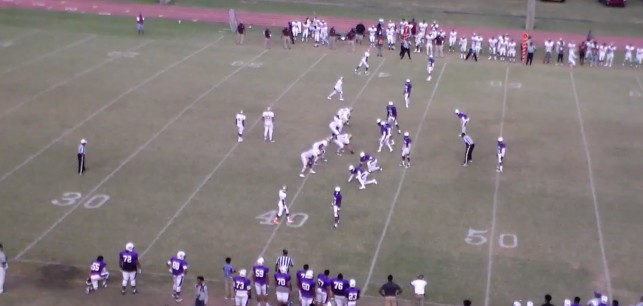
FOURMATION
We have four major run concepts (Gap, Zone, Power, Draw) that we run up front, and four major drop back pass concepts (curl/flat, Hitch/Corner, Post/Dig, and Zone Flood) that we implement on the perimeter. When initiating our teaching processes with our kids, the very first thing we tell them is that we only have four runs and four passes that we will run from as many formations that we can create. No matter what the formation, we will always end up running a form of one of these four concepts. EVERYTHING surrounds the number "four". We explain that being in 2 x 2, whether it be 10 or 11 personnel, will equal us out to four. The same goes for 3 x 1. A small play of words on the concept, but it grabs their attention to the special status of the number. Offensively, we major in 10 personnel 2x2, which will be referred to as "Deuce", and 11 personnel, referred to as "Doubles". For 3x1, we title 10 personnel "Trips" (Diagram 1), and 11 personnel "Trio" (Diagram 2). We have the ability to shift and motion to various other forms of 2x2 and 3x1, but for the purpose of this study, we will limit our presentations to our 3x1 formations.
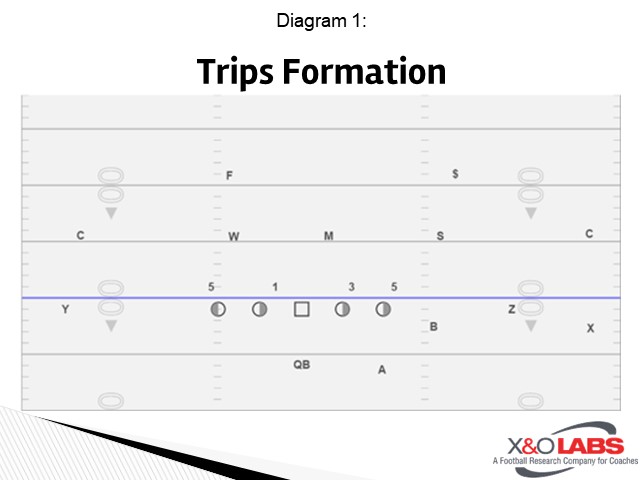
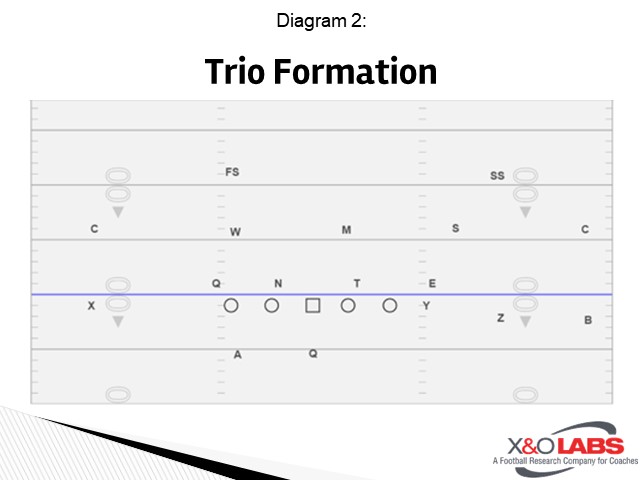
Nearly 70% of our run game is a form of "Gap". In order to focus on the implementation of the 'F.A.S.T." Concept, rather than overview a whole offensive scheme, we will center this information share on it. Whether it becomes a Veer read, Midline read, or RPO is totally dependent upon the decision making of the players as it pertains to the defensive look that is presented to them, as well as the tempo that we have called. For example, if we are in a check at the line tempo, we normally will run a gap RPO. What separates our form of RPO is that the base call is preset according to the formation we are in. If we are in 3x1 10 or 11 personnel and we give a "gap" blocking call away from the multiple receiver side, we automatically tag the "Stick" concept as the pass option. When the play call is signaled, this is where the ownership comes into play as we move into the "Answer" phase of the call.
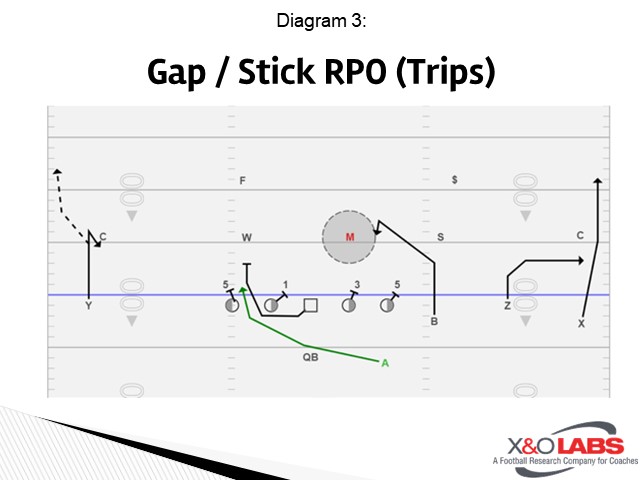
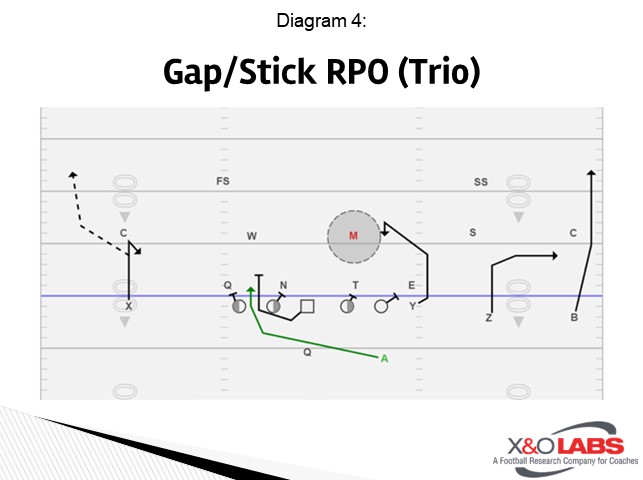
ANSWER
The quarterback alerts the front as to which gap the lead block will fold into. If he sees a pull side 3 technique, he makes a "Zero" call, which indicates that the center will pull into the first available opposite gap. The center looks to see if he has a clear "5" technique, or a tight 5/possible 4 technique. If the 5 is clearly determined, he echoes "Base, Base" to the other linemen. This call tells them to base the attached techniques, allowing the center to pull into the open opposite B gap. It is understood that the conflict player is the linebacker nearest to the pass option.
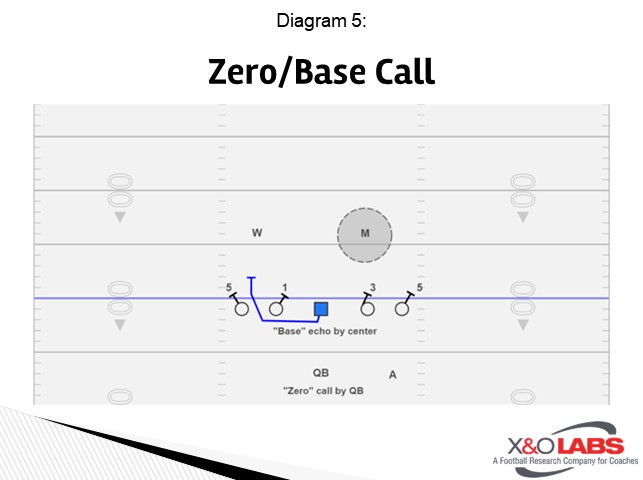
To study game film of this concept, click on the video below:
Head Football Coach
Salem High School (GA)
Twitter: @CoachLaws00
In 2016, when I was hired by the administration at Salem High School in Conyers, Georgia, my immediate goal was to revitalize the program by introducing an up tempo, no huddle form of offense that formerly ran the Wing-T. By year two, we were fortunate enough to reach the Georgia High School Association Class AAAA playoffs for the first time in 4 years. I firmly feel that what made our success unique from other versions of this form of offense has been our embracing the concept of giving ownership to the players, rather than depending upon the play calling of our coaching staff.
We base our teaching on the acronym "F.A.S.T.", which stands for "FOURmation", "Answer", "Selection", and " Tempo". We utilize "F.A.S.T." as a double entendre of sorts, where, by conditioning, when one hears the word "fast" utilized when discussing offense, it becomes engrained in the psyche of the players to operate at a high rate of speed, while simultaneously reminding them of the order of their implementation of the selected offensive concept. Our play menu is quite reduced when compared to many other offenses, but our belief is that if we can implement what we have, from multiple formations, with built in answers to what the defense presents us, while being decisive in our selection, at a high paced tempo, we can never be wrong.

FOURMATION
We have four major run concepts (Gap, Zone, Power, Draw) that we run up front, and four major drop back pass concepts (curl/flat, Hitch/Corner, Post/Dig, and Zone Flood) that we implement on the perimeter. When initiating our teaching processes with our kids, the very first thing we tell them is that we only have four runs and four passes that we will run from as many formations that we can create. No matter what the formation, we will always end up running a form of one of these four concepts. EVERYTHING surrounds the number "four". We explain that being in 2 x 2, whether it be 10 or 11 personnel, will equal us out to four. The same goes for 3 x 1. A small play of words on the concept, but it grabs their attention to the special status of the number. Offensively, we major in 10 personnel 2x2, which will be referred to as "Deuce", and 11 personnel, referred to as "Doubles". For 3x1, we title 10 personnel "Trips" (Diagram 1), and 11 personnel "Trio" (Diagram 2). We have the ability to shift and motion to various other forms of 2x2 and 3x1, but for the purpose of this study, we will limit our presentations to our 3x1 formations.


Nearly 70% of our run game is a form of "Gap". In order to focus on the implementation of the 'F.A.S.T." Concept, rather than overview a whole offensive scheme, we will center this information share on it. Whether it becomes a Veer read, Midline read, or RPO is totally dependent upon the decision making of the players as it pertains to the defensive look that is presented to them, as well as the tempo that we have called. For example, if we are in a check at the line tempo, we normally will run a gap RPO. What separates our form of RPO is that the base call is preset according to the formation we are in. If we are in 3x1 10 or 11 personnel and we give a "gap" blocking call away from the multiple receiver side, we automatically tag the "Stick" concept as the pass option. When the play call is signaled, this is where the ownership comes into play as we move into the "Answer" phase of the call.


ANSWER
The quarterback alerts the front as to which gap the lead block will fold into. If he sees a pull side 3 technique, he makes a "Zero" call, which indicates that the center will pull into the first available opposite gap. The center looks to see if he has a clear "5" technique, or a tight 5/possible 4 technique. If the 5 is clearly determined, he echoes "Base, Base" to the other linemen. This call tells them to base the attached techniques, allowing the center to pull into the open opposite B gap. It is understood that the conflict player is the linebacker nearest to the pass option.

To study game film of this concept, click on the video below:









